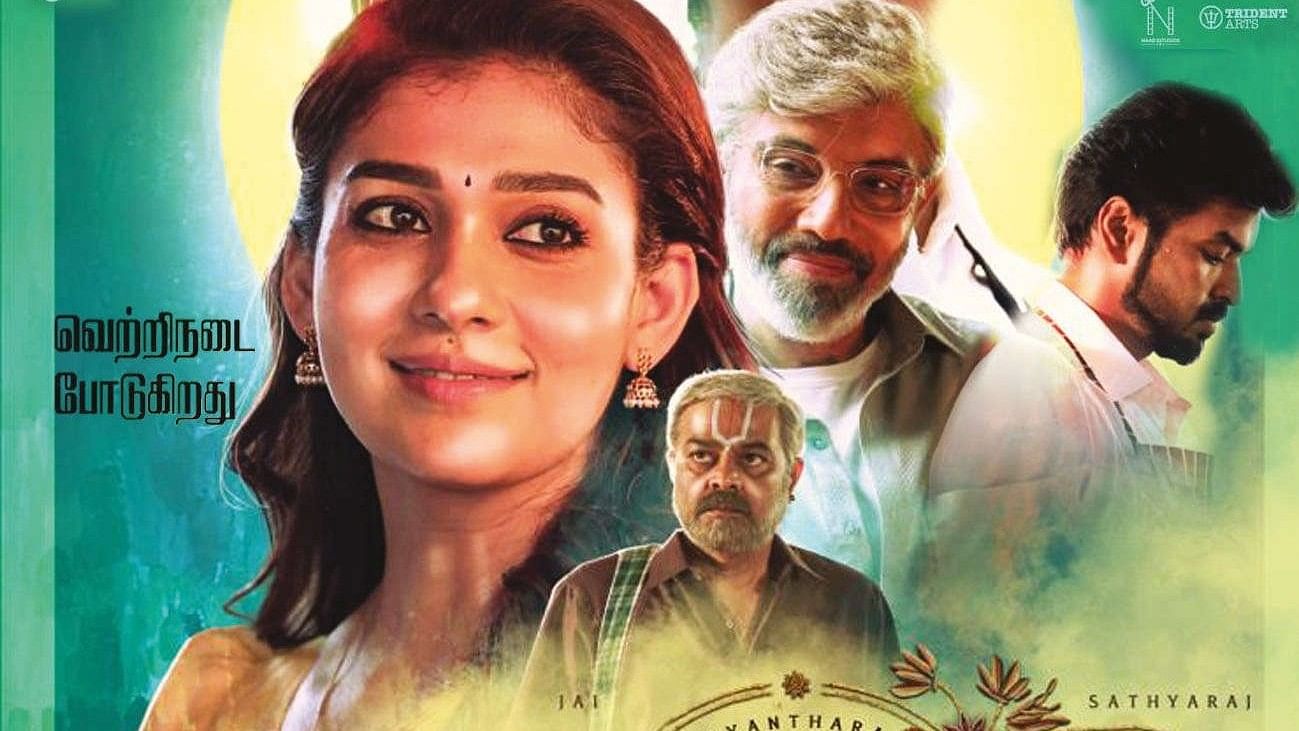
Netflix removed ‘Annapoorani’ after Hindutva groups protested against Rama being portrayed as a meat eater.
Credit: X/@CinemaTime
OTT platforms were originally meant to stream uncensored content and even films that had been passed with cuts were to be shown in full. But in the recent past several films and TV series have gotten into trouble with protesting groups. ‘Tandav’ was one of the first. The television series is set in the world of politics, from the same genre as Prakash Jha’s ‘Raajneeti’ — family politics. Others followed suit; ‘Annapoorani’ was the next casualty. It implied (through a Muslim character) that Sri Ram ate meat during his exile. In the ‘Ramayana’, Sri Rama kills the rakshasa Mareecha who has temporarily taken the shape of a golden deer. I had naturally assumed from the episode that Sri Rama was not vegetarian but I was evidently wrong. In any case Valmiki, who authored the ‘Ramayana’, was a hunter culpable of killing birds and he might not have been particularly averse to people eating meat. ‘Bheed’ was another film that ran into trouble with groups, largely because it dealt with the COVID lockdown that the government would rather forget. The offence in these cases is taken by right-wing groups and the government is apparently introducing prior censorship of OTT material through a body known as the Broadcast Advisory Council, and the justification will be ‘offensive material’. An issue that remains is whether, after the institution of the body, ‘offendees’ will still be allowed to protest content or if the central government will become sole arbiter.
From the above examples we may conclude that censorship is not really something pertaining to the content of the films but is essentially a political tool to gain control over socio-political expression. If all of the above shows/films offend the Hindu right-wing sensibility, it is not only this political category that has protested and enforced censorship. In December 1986, a leading daily faced violence and arson for publishing a short story in their Sunday section in which the protagonist was named Mohammed. Among those who protested loudest was a well-known local politician who helped mobilise the protesters into a disorderly mob. In 1988 Salman Rushdie’s ‘The Satanic Verses’ was banned by the Rajiv Gandhi government for similarly causing offence to “a community” as ‘Annapoorani’ is doing now. It is significant that when self-appointed “members of a community” protest the offence caused by expression, whether a piece of writing or a film, those outside it do not usually lodge a counter-protest. Neither liberals nor the Hindu right-wing protested the ban on ‘The Satanic Verses’.
Everything said about ‘offensive content’ makes one suppose that the ensuing protests are spontaneous and emotional. This means that the protests must originate in a group that, because it shares a single identity, are all ‘offended’ together and as one body. But the more one thinks about it, the more unlikely it begins to seem and it is more plausible that the protests are organised and the protesters duly paid for the ‘offence’ they have taken. Just as riots need to be politically mobilised and duly paid for, so do protests, and it could be argued that both are means by which leaders/organisations that stand for a viewpoint take stock of their support base or use the occasion to address their constituencies. For the impression that they are spontaneous the protests need to be around religion or some such emotional topic; there could not, for instance, be spontaneous protests with a rational purpose. This may explain why rational opposition to something irrational or emotional rarely takes off.
OTT platforms offered hope to young filmmakers but restrictions on content are likely to be imposed for the reasons indicated above. But the issue to be considered is also whether censorship can be so effective as to suppress all expression. Are there no alternate ways of saying something without raising hackles especially when one knows the kind of material that might provoke political groups to organise? If one studies the kind of material that is being singled out for censorship they are by no means the most necessary segments and it is not that without those bits the films or shows would lose their bite. There are always strategies to be adopted by which expression can continue unabated.
If one studies the history of cinema one finds that there were historical periods in certain countries — as for instance the USSR and Eastern Europe under Communist rule — when censorship was most stringent. But on studying the films made at the time one finds that many of them — as in Poland and Hungary — are even the best films ever made there; after the end of censorship the quality of cinema actually plummeted. The most penetrating attacks on Communism happened, by and large, when the respective countries were under Communist rule. That is not to say that censorship is good for artistic expression but that when obstacles are placed in the path of expression, the artistic sensibility tries to say things in other ways. India officially allows free speech but intelligent filmmakers should perhaps proceed on the premise that it does not quite do so; but with a bit of guile he or she can still say virtually anything.
(The author is a well-known film critic)